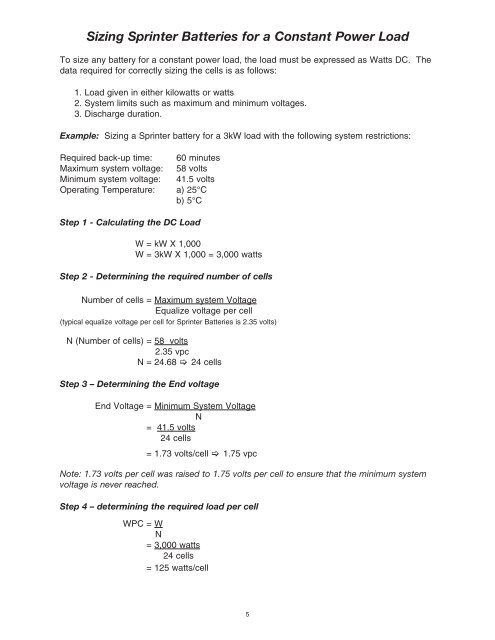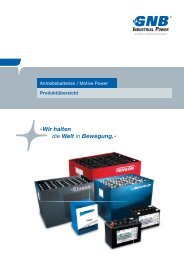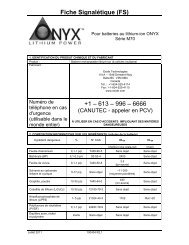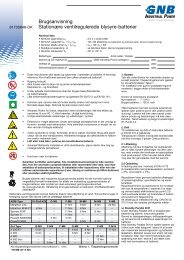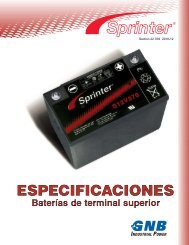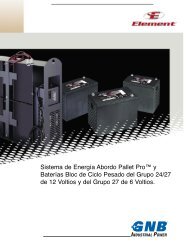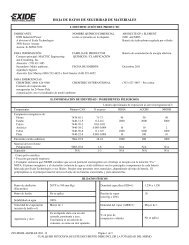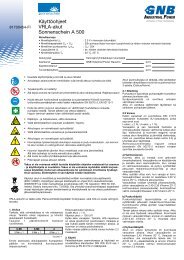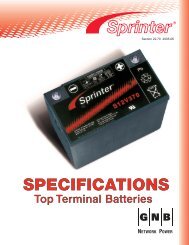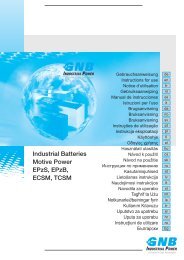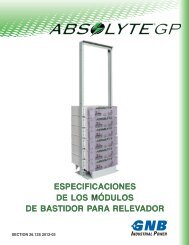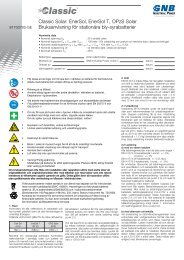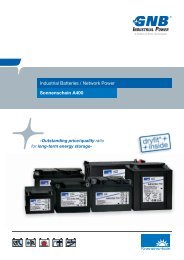RACK & ACCESSORY GUIDE - Exide Technologies
RACK & ACCESSORY GUIDE - Exide Technologies
RACK & ACCESSORY GUIDE - Exide Technologies
You also want an ePaper? Increase the reach of your titles
YUMPU automatically turns print PDFs into web optimized ePapers that Google loves.
Sizing Sprinter Batteries for a Constant Power Load<br />
To size any battery for a constant power load, the load must be expressed as Watts DC. The<br />
data required for correctly sizing the cells is as follows:<br />
1. Load given in either kilowatts or watts<br />
2. System limits such as maximum and minimum voltages.<br />
3. Discharge duration.<br />
Example: Sizing a Sprinter battery for a 3kW load with the following system restrictions:<br />
Required back-up time: 60 minutes<br />
Maximum system voltage: 58 volts<br />
Minimum system voltage: 41.5 volts<br />
Operating Temperature: a) 25°C<br />
b) 5°C<br />
Step 1 - Calculating the DC Load<br />
W = kW X 1,000<br />
W = 3kW X 1,000 = 3,000 watts<br />
Step 2 - Determining the required number of cells<br />
Number of cells = Maximum system Voltage<br />
Equalize voltage per cell<br />
(typical equalize voltage per cell for Sprinter Batteries is 2.35 volts)<br />
N (Number of cells) = 58 volts<br />
2.35 vpc<br />
N = 24.68 [ 24 cells<br />
Step 3 – Determining the End voltage<br />
End Voltage = Minimum System Voltage<br />
N<br />
= 41.5 volts<br />
24 cells<br />
= 1.73 volts/cell [ 1.75 vpc<br />
Note: 1.73 volts per cell was raised to 1.75 volts per cell to ensure that the minimum system<br />
voltage is never reached.<br />
Step 4 – determining the required load per cell<br />
WPC = W<br />
N<br />
= 3,000 watts<br />
24 cells<br />
= 125 watts/cell<br />
5


